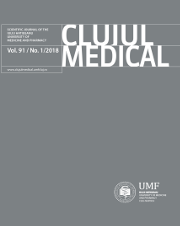MOLECULAR EPIDEMIOLOGY OF THE COMMUNITY-ASSOCIATED METHICILLIN-RESISTANT STAPHYLOCOCCUS AUREUS CLONES: A SYNTHETIC REVIEW
DOI:
https://doi.org/10.15386/cjmed-807Keywords:
Staphylococcus aureus, CA-MRSA, clonesAbstract
The article presents a synthetic molecular characterization of the methicillin-resistant Staphylococcus aureus and describes the most important community-acquired methicillin-resistant Staphylococcus aureus (CA-MRSA) clones that circulate nowadays in the world: the main molecular and epidemiological characteristics, as well as notions related to the clinic of infections produced by these clones and their antibiotic resistance spectrum.
The predominant clone of CA-MRSA in North America is USA300 – ST8-IV in North America, in Australia – Queensland (Qld) MRSA (ST93-IV), in Europe – ST80-IV, in Asia there is a high heterogeneity of clones population, in Africa the distribution of CA-MRSA clones is unclear, and in South America – USA 1100 and USA300-Latin American variant are predominant .
The molecular diagnosis is performed by highly specialized institutions. The knowledge of clones allows the study of antibiotic resistance spectrum for each one, a fact of great importance for medical practice. Molecular epidemiology of the CA-MRSA shows that lowly restricted sales of antibiotics in shops and pharmacies, as well as medical prescribing practices without a laboratory investigation, especially in Eastern Europe and Asia, contribute to the development of new MRSA clones with increased resistance to antibiotics.
Downloads
Additional Files
Published
How to Cite
Issue
Section
License
The authors are required to transfer the copyright of the published paper to the journal. This is done by agreeing to sign the Copyright Assignment Form. Whenever the case, authors are also required to send permissions to reproduce material (such as illustrations) from the copyright holder.

The papers published in the journal are licensed under a Creative Commons Attribution-NonCommercial-NoDerivatives 4.0 International License.

